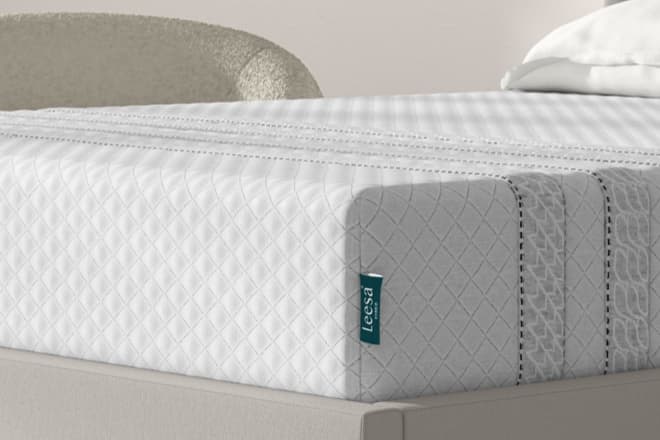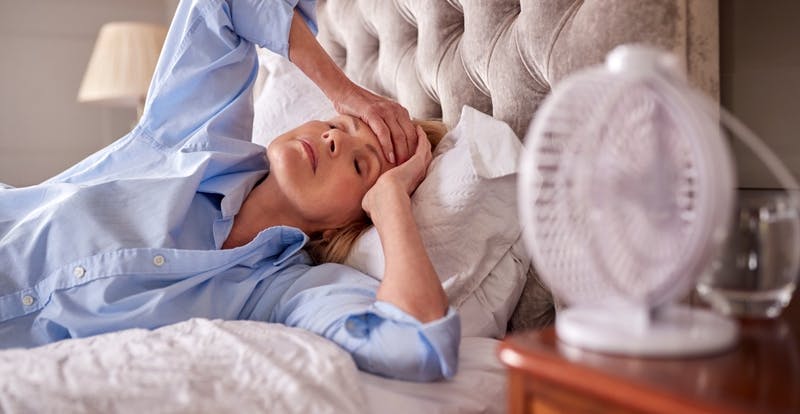Isn’t it funny how two people can be in the exact same room but one of them is cold and the other is hot?
For example, maybe your partner thinks your bedroom is the perfect temperature at 75 degrees, while you feel like 75 is stifling. Do you prefer when the room is 65 degrees you feel perfect, while your partner is wrapped in blankets with chattering teeth.
Feel a little too familiar? If you prefer your bedroom cool, we have proof to back you up. Scientific studies show that a cooler temperature in the bedroom can help you sleep better.
What happens to your body (and brain) while you sleep?
Did you know that your body actually decreases its own temperature to initiate sleep? It’s true—your body’s temperature gradually begins to drop in the late afternoon and continues into the evening hours until it’s time to sleep.
It’s all part of your body’s thermoregulation, which maintains your core internal temperature. Your body is like a machine that's programmed to cool down at the end of the day, signaling to your brain that it’s time to go to sleep, and to warm back up in the early hours of the morning, telling your body it’s time to wake up.

“The key is to find a good balance between hot and cold to support your body in moving you from alertness to sleep and then back to alertness when you are ready to wake up,” explains Dr. Michael Breus, a doctor specializing in sleep.
Your brain also goes through several stages as your body enters sleep mode. In the first few minutes, your body’s functions begin to slow down, including eye movements, and your brain starts creating alpha and theta waves to prepare for deep sleep.
When you sleep, your brain gets a major reboot, much like a computer’s restart mode. Your brain works hard to store memories and facts in your long-term memory storage, repairs any damage and fights disease in preparation for a new day.
Much like big computers, processors and other electronic equipment, a cool room is the best setting for your brain's reboot.
The science behind temperature and sleep
Numerous studies have been conducted on how temperature impacts sleep.
A 2008 study by Dutch researchers showed that the tiniest increase in temperature caused by “skin warming” (as little as 0.04 degrees) resulted in the increased probability of waking earlier in the morning for patients. The study revealed that elderly patients were especially susceptible to these findings.
In June 2014, a study by the National Institutes of Health found that consistently sleeping in a room that was 66 degrees gave male patients significant “metabolic advantages.” They tended to burn more calories during the day and the researchers indicated that the patients were less likely to develop diabetes.
In a 2011 study of patients with chronic insomnia, doctors found that wearing a “cooling cap” with cool, circulating water on the front of the head helped. The patients fell asleep faster and stay asleep longer, bringing them more in line with average healthy patients. The results were also significantly more successful for the patients than the use of pharmaceutical aids like sleeping pills.
What's the ideal temperature for sleeping?
Most experts say the ideal temperature for your bedroom to facilitate deeper rest is between 60 and 67 degrees. Sleep expert Dr. Breus pinpoints the perfect bedroom temperature right at 65 degrees.
“Keep in mind, room temperature is the temperature of the air surrounding us,” Dr. Breus points out. “Remember those sheets, blankets, comforters and heat-producing bed partners? Well, that’s where it gets tricky.”
In other words, some bedding is better at allowing for airflow while you sleep than others.
Dr. Breus warns that latex and foam mattresses can sometimes cause hot air to get trapped inside, increasing your body’s temperature while you sleep. This is regardless of what temperature the air around you is. Add on a thick sheet or blanket and it can get even warmer.
So what do you do if memory foam is the best mattress for your head, neck and back?
At Leesa, we wanted to engineer a mattress that provided all the benefits of foam but didn't sleep hot. The Leesa Original mattress is 3 layers of foam, with a cooling top layer that was made to keep you cool while you sleep (which is where many other foam mattresses fail).
Our Leesa Sapira Hybrid mattress and Leesa Legend Hybrid mattresses give you the benefits of foam and springs (double spring layers in the Legend Hybrid!). With a hole-punched top layer of foam that provides airflow to keep you cool all night long.
Quick tips for sleeping cooler
Here are some of our favorite tips & tricks to help you stay cooler while you sleep:
- Avoid hot baths before bed. If you’re the type of person who loves a hot soak to help de-stress at the end of a long day, we're not saying change your routine! However, sleep experts warn that you should avoid hot baths within two hours of bedtime, so that your body’s core temperature has more time to cool down and help you get the zzz's you need.
- Keep your hands and feet warm. This may sound counterintuitive, since we’re telling you to cool it down in the bedroom, but your hands and feet are the two body parts that need more warmth than the rest of your body. Cold fingers and toes are more likely to wake you up in the middle of the night. It may sound strange, but doctors recommend sleeping in light, breathable clothing like a thin t-shirt and shorts, with socks on your feet. They also recommend to try sleeping with your hands under the sheets and blanket to keep them warm.
- Check your windows. Allow your thermostat to do its job—if you need the air conditioning on at night to keep your room around 65 degrees, make sure your windows are tightly closed. If your bedroom window faces the sun, invest in good curtains that will keep the sun from heating up your room.
- Use a fan. If you have a ceiling fan in your bedroom, that's great. If not, invest in a good floor fan that you can use to help circulate cool air at night while you sleep. The white noise your fan makes can also help you fall asleep faster and stay asleep longer.
- Consider raising your bed. Heat can radiate from the floor of your bedroom, so some sleep experts recommend raising your bed off the ground. Check out Leesa’s platform bed or adjustable base for a bed foundation that’s not only beautiful, but keeps your bed off the floor to help you sleep cooler at night.
- Stay hydrated. Be sure to drink plenty of water throughout the day to help cool your body naturally and continue to do so throughout the night while you sleep. Plus your body needs to water to carry out its processes while you sleep.
Upgrade your sleep with Leesa and get better sleep.



